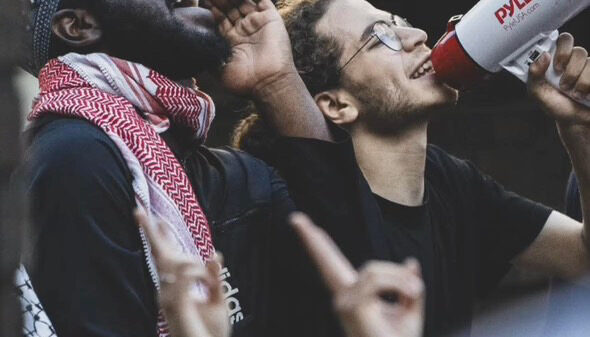Under new management after Wes Lexner’s departure in 2021, this year’s Victoria’s Secret fashion show has sparked conversation on social media, with people arguing over the true reason for using influencers as Angels. Although several notable models, such as Adriana Lima and Bella Hadid, were still featured at the show, the masses believe that this new approach to “inclusivity” lacks actual integrity in uplifting women in the 21st century. This raises the question of what VS is actually selling: the clothes? Or the experience?
The old versus the new
Victoria’s Secret shows have historically helped launch the careers of new models. Under the leadership of former marketing CEO Edward Razek, models were painted in a fantastical light, marketing the so-called Angels as ethereal, idealistic images of what the audience—generally teenage girls—would aspire to be. However, Razek’s comments on how he didn’t believe the show should feature “transsexuals” because “the show is a fantasy” led to audiences becoming angered with Victoria’s Secret’s lack of inclusivity. Therefore, under the new management of Hillary Super, she directly challenges these ideals that the Victoria’s Secret brand was previously known for, and instead moved towards a more “forward-thinking” and inclusive ideal of the female experience.
Comparing the 2008 show to 2025, there is a clear distinction between the criteria used to scout for potential models. In 2008, most, if not all, angels had tanned skin, slim waists, high cheekbones, and Western features. Unlike high fashion shows of the early 2000s, where the Slavic Doll was fragile, aloof, and otherworldly, the Brazilian Bombshell took over the VS stage. They were curvier, sun-kissed, and had an air of sensuality that the Slavic dolls lacked. This distinction successfully launched the brand’s distinct image, helping Victoria’s Secret gain traction and a unique standing in the fashion industry. They were not only selling the clothing, but also the experience.
In 2025, the slim definition of an angel has been expanded. Now, aiming to drive inclusivity in the show, people begin to relate more to the wider range of models, breaking down the normative view of femininity and sexuality. The show featured notable plus-sized model Barbie Ferreira, athlete Angel Reese, and the transgender model Alex Cosani. The move to this form of inclusivity
The Debate between Tradition and Modernity
Despite the positive feedback, some viewers still hold onto the previous image. For instance, some comments on the show featured in Victoria’s Secret’s YouTube Channel compared the “original” angels to the new “influencers”, saying, “The OG just hit different. You can tell that they set the standard for VS. They are the true angels for VS.” This shows how the unattainable female ideals are still held by VS consumers today, believing that the deservingness of becoming an Angel should be more exclusive. The image that was built previously had seen so much success due to people’s resonance with this old brand identity, which continues to pit the “OG” celebrities against the new wave of influencers, creating an audience’s standard for comparison.
The supporters of VS’s new approach suggest that this way of thinking is very “outdated”, as they think this is the true way to represent a fantasy that is both idealistic and inclusive. Jasmine Hyman from Cosmopolitan asks, “Why are we acting as though traditional models are a marginalized group and that creators and athletes are somehow taking their opportunities away?” While there were influencers like Quenlin Blackwell, Gabi Moura, and Josey Muckosky included in this year’s show, a large majority of the angels were career models, ranging from former angel Alessandra Ambrosio to newcomers like Lila Moss.
The debate only brought the show more attention. Perhaps moving to include these micro-celebrities is not only a bid to create relatability for a new, modern audience base, but also an effort to amp up discussion around the Victoria’s Secret brand. No press is bad press, right? We can wonder if the inclusion of these new forms of Angels is genuine, or simply another marketing tactic to increase VS’s revenue and profit margins.
Influencer Cultures in Victoria’s Secret
The rise of influencer culture allowed consumers of their content to dream of a new fantasy: that becoming a Victoria’s Secret Angel can be within the consumer’s grasp through using social media. This further enhances the attractiveness of the VS brand, expanding its audience base by building its fantasy around this new dream. To VS, the more social reach these influencers have, the larger their ability to connect with their new audiences and expand the brand to become more “inclusive” and “forward-thinking”.
On one hand, the rise of influencers and their increasing popularity has led fashion brands to utilize these “micro-influencers” for product promotion and marketing, allowing more interactions with their consumers in comparison to using traditional marketing methods. According to the Business of Fashion, “influencer-marketing industry forecast to reach $21.1 billion in 2023, up from $16.4 billion in 2022”. This solidifies their significant impact on the economics of the fashion industry, legitimising them in the eyes of business owners. To brands like Victoria’s Secret, the use of influencers is exactly what would make their brand “relevant” again, especially after experiencing losses from Razek’s scandals, their failure to adopt new perspectives, and Lerner’s connection to Epstein. Using influencers like Quenlin Blackwell, the VS show gained 1.7 million views on her channel alone, generating a new demographic of audiences through the use of her platform. In the eyes of VS, this can only mean higher revenue growth and attention on their new brand. This begs the question of where Victoria’s Secret stands in today’s discussions of what is considered ethical fashion branding.
What is truly Authentic?
VS’s shift to using influencers should actually be no surprise, considering the tremendous losses that they have faced in previous years. According to Business Insider, “Between 2016 and 2018, its market share in the US dropped from 33% to 24%.” If we were to take a look at their actual product improvements, the range of lingerie sets to the quality of fabrics used have remained static, where some have even gone down. The previous fantasy bras shown in the last 20 years of Victoria’s Secret shows have been “valued at upwards of US $10 million“. Whereas this year’s show only featured the angels wearing basic, commercially viable products worth around $40-50 USD. The increase in marketing strategies, influencers, using nepo-baby models, performances, and K-pop groups, is all to cover up the fact that, inherently, the VS brand has nothing else to show for.
Now that their old business model has diminished, they are desperately trying to grasp onto the latest trends in order to stay relevant in today’s game.
Compared to high-end brands like Louis Vuitton and Dior, Victoria’s Secret’s product and price ranges have always been middle-low grade, and highly rely on the general audience to buy their experience to sell their product. The inability of the current audience to tell what VS’s new branding is goes to show the lack of authentic creative inclusion of their audience. Although what it means to be an angel has changed, we can still argue that VS is still attempting to sell the old fantasy of exclusivity and sensuality. The ideas of the objectification of women can still be in play in today’s business model, as the audience is still looking at whether the models fit today’s standards of “inclusive beauty”.
Although there are significant changes to inclusion under the new management, the impact of such actions is still not being portrayed as genuine or authentic enough to convince their audience of their change. To say the least, VS’s new message to their audience is still in need of evaluation, and the genuineness of their actions is still up for debate.
















